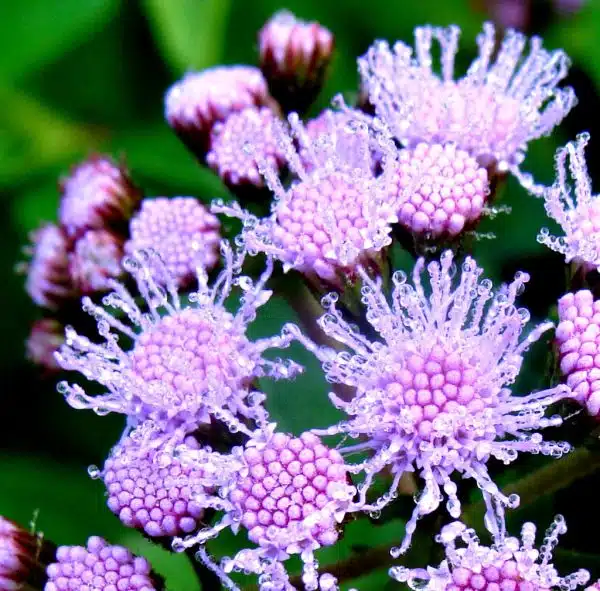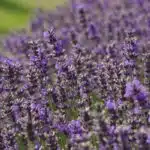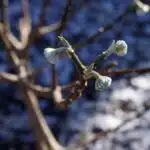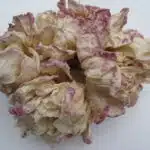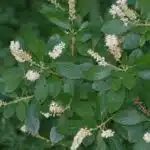Ageratum, commonly known as the Floss flower, is a beautiful and easy-to-care for plant that belongs to the Asteraceae family. This annual plant produces small fluffy flowers that come in shades of blue, pink, and white. Its ability to grow in different soil types and its low-maintenance nature make it a popular choice among gardeners.
If you are looking for a plant that can add color and texture to your garden without requiring much attention, then Ageratum may be the perfect choice for you. In this article, we will provide you with a complete guide on how to care for and grow Ageratum successfully. From soil requirements to watering needs and pruning techniques, we will cover everything you need to know about this beautiful plant. So whether you are an experienced gardener or just starting out, read on to discover all the tips and tricks necessary for growing healthy and vibrant Ageratum plants.
Understanding Ageratum’s Growth Habits
Ageratum, also known as floss flower, is a hardy annual plant that is native to Central America. It is characterized by its fluffy, blue or pink flowers that bloom in clusters. Understanding ageratum’s growth habits is key to successfully growing this plant.
Ageratum thrives in full sun and well-draining soil. It can tolerate some shade, but too much shade can result in leggy plants with fewer blooms. The optimal planting conditions for ageratum are in the spring after the last frost has passed. When planting, make sure to space them at least 6 inches apart to allow for proper air circulation and prevent disease.
Ageratum has a compact growth habit, reaching heights of up to 12 inches and spreading up to 18 inches wide. It requires moderate watering, enough to keep the soil moist but not waterlogged. Overwatering can lead to root rot and other fungal diseases. Understanding ageratum’s growth habits will help you create an ideal growing environment for this beautiful plant. With the right conditions, it will reward you with an abundance of colorful blooms throughout the growing season.
To ensure optimal growth and development of your ageratum plants, choosing the right soil is crucial.
Choosing The Right Soil For Ageratum
As we have learned in the previous section, ageratum plants are known for their growth habits that involve branching stems and small clusters of flowers. To ensure that these beautiful blooms thrive, it is important to choose the right soil for planting. Soil composition plays a crucial role in the success of growing ageratum plants.
When selecting soil for ageratum, it is important to look for a well-draining soil with a pH level between 6.0 and 7.5. The soil should also be rich in organic matter to provide vital nutrients for the plant’s growth. Ageratum plants prefer slightly acidic soil, so if necessary, amend the soil with lime or sulfur to achieve the optimal pH level.
Soil preparation is key when it comes to planting ageratum. Start by removing any weeds, rocks, or debris from the planting area. Next, loosen the soil to a depth of at least six inches using a garden fork or tiller. Add compost or aged manure to increase organic matter content and mix thoroughly into the soil. Once the soil has been properly prepared, it is ready for planting.
With careful consideration of proper soil composition and thorough preparation, your ageratum plants will flourish and produce vibrant blooms throughout their growing season. In the next section, we will delve deeper into preparing the soil for planting ageratum and explore best practices for ensuring optimal growing conditions.
Preparing The Soil For Planting
Soil preparation is crucial to the success of your ageratum plants. Before planting, test your soil to determine its pH level and nutrient content. Ageratum plants prefer a slightly acidic soil with a pH between 6.0 and 6.5. If your soil is too alkaline, you can lower the pH by adding elemental sulfur or aluminum sulfate. On the other hand, if your soil is too acidic, you can raise the pH by adding lime.
In addition to testing the soil’s pH level, it’s also important to amend it with organic matter such as compost or aged manure. This will improve the texture and fertility of the soil while enhancing its ability to hold water and nutrients. Work the organic matter into the top 6-8 inches of soil using a garden fork or tiller.
When choosing a location for planting your ageratum, look for an area that receives full sun exposure and has good drainage. Ageratum plants thrive in bright sunlight and require well-draining soil that doesn’t retain excess moisture. Avoid areas where water tends to accumulate after rain or irrigation, as this can lead to root rot and other fungal diseases.
As you prepare your soil for planting ageratum seeds or seedlings, keep in mind that proper preparation will help ensure healthy growth and abundant flowering throughout the growing season. In our next section, we will discuss how to plant ageratum seeds or seedlings in more detail, so stay tuned!
How To Plant Ageratum Seeds Or Seedlings
Planting ageratum seeds or seedlings is an easy process that can be done by gardeners of any level. The first step is to prepare the soil by removing any weeds and adding compost or organic matter to improve the soil’s fertility. Ageratum prefers well-draining soil with a pH level between 6.0 to 7.5.
When planting seeds, it’s important to plant them at the appropriate depth, which should be no more than 1/8 inch deep. Planting too deeply may cause the seeds to struggle when trying to germinate, resulting in poor growth or even death. Germination time for ageratum seeds is usually around 7-14 days, depending on growing conditions such as temperature and humidity.
If planting seedlings, gently remove them from their containers and loosen any tightly wound roots before placing them into pre-dug holes in the ground or in containers with potting soil. Be sure to space the seedlings at least six inches apart from one another to allow room for growth. Once planted, water thoroughly and ensure they receive enough sunlight throughout the day. In the next section, we will discuss watering requirements for ageratum plants and how often you should water them to keep them healthy and thriving.
Watering Requirements For Ageratum
After planting your ageratum seeds or seedlings, the next important step is to ensure that you are watering them correctly. Ageratum plants require consistent moisture, but overwatering can lead to root rot and other problems. It is essential to find a balance between keeping the soil moist and avoiding waterlogged roots.
Watering frequency will depend on various factors such as temperature, humidity, and soil type. During hot summer months or in dry climates, you may need to water more frequently than in cooler temperatures or humid environments. To determine when to water your ageratum, check the soil regularly by inserting your finger about an inch deep into the soil. If it feels dry at this depth, it is time to water.
Signs of overwatering include yellow leaves that fall off easily and a mushy appearance of the plant’s stem near the soil line. If you notice these symptoms in your ageratum plants, reduce watering frequency immediately and allow the soil to dry out slightly before watering again. It is crucial not to let your ageratum plants sit in standing water for too long as this can lead to root rot and other fungal diseases.
In summary, proper watering practices are essential for healthy ageratum plants. Find a balance between keeping the soil consistently moist without overwatering or allowing standing water around the roots. In our subsequent section, we will discuss fertilizing your ageratum plants and how it can help them thrive even more.
Fertilizing Your Ageratum Plants
When it comes to fertilizing your ageratum plants, there are two main options: organic fertilizers and synthetic fertilizers. Both have their advantages and disadvantages, so it’s important to consider which one is best for your specific needs.
Organic fertilizers are made from natural materials such as compost, animal manure, or bone meal. They release nutrients slowly over time and improve the soil structure. However, they can be more expensive than synthetic fertilizers and may not provide as much of an immediate boost in plant growth.
On the other hand, synthetic fertilizers are chemically made and provide a quick burst of nutrients to the plant. They can also be customized to meet specific nutrient needs. However, they can harm beneficial microorganisms in the soil and contribute to environmental pollution if used excessively.
In deciding which fertilizer to use on your ageratum plants, consider factors such as cost, environmental impact, and personal preference. It’s also important to follow instructions carefully when applying either type of fertilizer to avoid over-fertilization and potential damage to the plant.
Transition:
Now that you know how to properly fertilize your ageratum plants, it’s time to discuss another important aspect of their care: pruning for optimal growth.
Pruning Ageratum For Optimal Growth
Pruning Ageratum can help to encourage optimal growth and blooming. It is important to know when to prune Ageratum in order to achieve the desired result. Pruning Ageratum should be done in the late winter or early spring, before new growth begins. There are several pruning techniques which can be used when pruning Ageratum, such as deadheading and pinching back.
When To Prune Ageratum
Pruning is an essential aspect of ageratum plant care as it helps to maintain the shape of the plants and promote healthy growth. One crucial factor to consider when pruning ageratum is timing. Typically, gardeners should prune their ageratum plants in late summer or early fall before the first frost. Pruning during this time ensures that the plants are healthy and ready for winter.
When pruning ageratum, gardeners must follow some tips for maintaining the shape of the plants. Firstly, they should remove any dead or yellowing leaves from the plant’s base using sharp scissors or pruning shears. Secondly, they should cut back any overgrown stems to encourage new growth and promote bushier plants. Gardeners can also pinch off the top of young ageratum plants to encourage branching and fuller growth.
To care for ageratum during winter, gardeners must take certain precautions after pruning their plants. They should avoid fertilizing their ageratum during this time as doing so may cause new growth that will be damaged by frost. It is also essential to mulch around the base of the plant with a layer of organic material such as straw or leaves to protect it from harsh winter temperatures. By following these tips, gardeners can enjoy vibrant and healthy ageratum blooms year after year without worrying about damage due to winter weather.
In conclusion, pruning is a crucial part of caring for ageratum plants as it promotes healthy growth and maintains their shape. Gardeners must prune their ageratum in late summer or early fall before winter arrives while following specific tips for maintaining their plant’s shape. Additionally, they must take precautions during winter such as avoiding fertilization and mulching around the base of their plant with organic material to protect it from harsh temperatures. With proper care, gardeners can enjoy beautiful and vibrant ageratum blooms throughout the growing season.
Pruning Techniques
Pruning is an essential practice for promoting optimal growth and maintaining the health of ageratum plants. By removing dead or yellowing leaves, cutting back overgrown stems, and pinching off young plants’ tops, gardeners can encourage healthy new growth and promote bushier plants. The benefits of pruning are numerous, including increased air circulation, better light penetration, and improved overall plant structure.
However, some common mistakes can occur when pruning ageratum plants. Gardeners must take care not to prune too much or too little. Over-pruning can cause stress on the plant and weaken its ability to regrow properly. On the other hand, under-pruning can lead to leggy growth and a less attractive appearance. It is also essential to use sharp scissors or pruning shears when pruning to avoid damaging the plant’s stems.
When it comes to pruning techniques for ageratum plants, timing is crucial. Late summer or early fall before winter arrives is the best time to prune ageratum plants as it promotes healthy growth and prepares them for winter dormancy. Gardeners should start by removing any dead or yellowing leaves from the base of the plant and then cut back any overgrown stems using sharp scissors or pruning shears. Pinching off young plants’ tops can also encourage branching and fuller growth while avoiding common mistakes such as over-pruning or using dull tools. With proper pruning techniques, gardeners can ensure their ageratum blooms beautifully throughout the growing season.
Supporting Your Ageratum Plants
Pruning your ageratum plants is a critical step to ensure their optimal growth. However, it is not the only task that you need to consider. Supporting your ageratum plants is also paramount, especially when they start to grow taller and heavier. If left unattended, the weight of the flowers and foliage can cause the stems to bend or even break.
Staking techniques are useful in supporting your ageratum plants. One of the most common methods is using bamboo sticks or wooden stakes. These materials are readily available and easy to use. Simply insert them into the soil beside your plant’s stem and tie them together loosely using garden twine or any soft material that will not damage your plant.
Pest prevention is another crucial aspect of caring for your ageratum plants. Common pests that may attack your ageratum include spider mites, aphids, and whiteflies. To prevent these pests from infesting your plant, keep it healthy by providing adequate water and nutrients. You can also use insecticidal soap or neem oil as a natural remedy if needed. By taking these steps, you can enjoy beautiful and healthy ageratum plants all season long without worrying about pest attacks.
Moving on to dealing with common pests and diseases, it’s important to keep an eye out for signs of trouble before they become major issues for your ageratum plants. Some common diseases that affect this plant include powdery mildew, leaf spot, and root rot. To prevent these diseases from spreading throughout your garden, remove any infected leaves or stems immediately and dispose of them properly. Make sure to also avoid overwatering your ageratum plants as this can lead to root rot.
Dealing With Common Pests And Diseases
Identifying Pests and Diseases of Ageratum (Floss Flower) can be done by closely observing the plant for signs of damage, such as wilting, leaf discoloration, and visible pests. Prevention and Control can be achieved by providing the plant with proper growing conditions and monitoring it regularly for signs of pest infestation. Treatment Strategies should focus on removing or controlling the pest populations, as well as providing the plant with the necessary nutrients and environment to ensure its continued health. Chemical insecticides are generally not recommended for Ageratum, so other methods such as physical removal, biological control, and cultural control should be employed. Beneficial insects can also be used to help reduce pest populations, as well as companion planting. Finally, it is important to ensure that the plant is well-drained and not overwatered, as this can create conditions that are more favourable to pests and diseases.
Identifying Pests And Diseases
Identifying pests and diseases in ageratum plants is crucial to their overall health and growth. Some common pests that may attack these flowers include aphids, spider mites, and thrips. These tiny insects can damage the flowers by feeding on their leaves or transferring viruses to them. To prevent infestation, it is important to regularly inspect the plants for any signs of pest activity. Sticky traps can also be used as a preventive measure.
Apart from pests, ageratum plants are also vulnerable to various fungal and bacterial diseases such as powdery mildew, gray mold, and root rot. These diseases can weaken the plant’s immune system and lead to stunted growth and even death. One natural remedy for fungal infections is neem oil which has antifungal properties. For bacterial infections, copper fungicides are effective in controlling the spread of bacteria.
In conclusion, identifying pests and diseases early on is essential in maintaining healthy ageratum plants. Preventive measures such as regular inspections and the use of sticky traps can help stop infestations before they occur. When dealing with infections, natural remedies such as neem oil and copper fungicides can provide an effective solution without causing harm to the environment or the plant itself.
Prevention And Control
Integrated pest and weed management is essential in preventing the growth and spread of pests and diseases in ageratum plants. By using a combination of preventive measures, cultural practices, and chemical treatments, gardeners can effectively control and manage infestations. One important aspect of integrated pest management is to maintain healthy plants by providing them with appropriate soil conditions, adequate water, and proper nutrition. This will help strengthen the plant’s immune system and enable it to resist pests and diseases.
Another effective way to prevent pests and diseases is by practicing good sanitation practices. This includes removing any dead or diseased plant material from the garden bed as soon as possible. Weeds can also attract pests and provide breeding grounds for diseases, so it is important to keep the area around the ageratum plants weed-free. Regularly cleaning tools, pots, and other equipment used in the garden can also help prevent the transfer of pests and diseases.
Chemical treatments such as insecticides and fungicides should only be used when necessary as they can harm beneficial insects and pollinators. Before using any chemicals, it is important to identify the pest or disease correctly so that an appropriate treatment can be chosen. Gardeners should follow all instructions on product labels carefully when using chemicals in their gardens. By following these preventive measures, gardeners can maintain healthy ageratum plants that are free from pests and diseases without harming the environment or themselves.
Treatment Strategies
As gardeners, it is important to be prepared for the possibility of pests and diseases affecting our ageratum plants. While preventative measures are crucial in keeping these problems at bay, sometimes treatment strategies become necessary. It is important to note that chemical treatments should always be a last resort and natural remedies should be tried first.
One effective natural remedy for common pests such as aphids and spider mites is neem oil. This plant-based oil works by disrupting the insect’s hormonal balance, ultimately leading to their demise. Another effective natural remedy is diatomaceous earth, which can be sprinkled around the base of plants to deter crawling insects like slugs and snails. Additionally, introducing beneficial insects like ladybugs or lacewings can help control pest populations in a non-toxic way.
When it comes to treating diseases, there are also natural remedies worth exploring. One popular option is a mixture of baking soda and water, which can be sprayed onto affected leaves to combat fungal diseases such as powdery mildew. Composting also plays a role in preventing disease by promoting healthy soil and reducing stress on plants. By incorporating these natural remedies into our treatment strategies alongside preventative measures, we can effectively manage pests and diseases while maintaining a healthy and thriving garden.
Harvesting Ageratum Flowers
Once ageratum flowers have bloomed and reached their full maturity, they are ready for harvesting. Start by cutting the stems at the base of the plant using sharp pruning shears. It’s best to harvest ageratum flowers early in the morning before the sun has had a chance to dry out the blooms.
Once you’ve harvested your ageratum flowers, it’s important to preserve them properly so that they can be enjoyed for a longer period of time. One way to do this is by hanging them upside down in a warm, dry place with good air circulation. Another option is to place them in a vase with fresh water and change the water every couple of days.
Ageratum flowers are not only beautiful but also versatile. They can be used in floral arrangements, wreaths, or even dried flower crafts. Get creative with these lovely blooms and enjoy their beauty all year round. In the next section, we will discuss how to propagate ageratum plants so that you can continue to enjoy their stunning blooms season after season.
Propagating Ageratum
As with many flowering plants, ageratum can be propagated in a variety of ways. One popular method is container propagation, which involves taking stem cuttings and rooting them in a container filled with soilless mix or perlite. To do this, select healthy stems from the parent plant and cut them at an angle just below a leaf node. Remove the lower leaves and dip the cut end in rooting hormone before placing it in the container. Keep the soil moist and provide bright, indirect light until roots have formed.
Another technique for propagating ageratum is through division. This method works well for established plants that have become too large for their current location or are showing signs of decline. To divide an ageratum plant, gently remove it from its pot or bed and shake off excess soil. Use a sharp knife or garden shears to separate the plant into two or more sections, each with its own set of roots and foliage. Replant each section in fresh soil and water thoroughly.
With proper care, both container propagation and division techniques can be effective ways to propagate ageratum. However, keep in mind that not all plants will successfully root or adapt to new growing conditions. It’s important to monitor your new transplants closely and make adjustments as needed to ensure their continued health and vitality.
As you work on propagating your ageratum plants, it’s also important to think ahead to their long-term survival. In the next section, we’ll discuss how to overwinter ageratum so that you can continue enjoying these beautiful flowers year after year.
Overwintering Ageratum
- Prior to winter, it is important to prepare Ageratum plants by trimming them back and mulching around the base to insulate the roots.
- During winter, Ageratum plants should be protected from frost by covering them with a frost blanket when temperatures drop below freezing.
- Additionally, Ageratum should be watered well before the onset of winter to ensure the plant has enough moisture for the cold season.
- In regions with heavy snowfall, Ageratum may require additional protection such as a layer of evergreen boughs or burlap to prevent snow from crushing the foliage.
Preparing Ageratum For Winter
Winter is the time when Ageratum plants need extra attention and care to survive the harsh weather conditions. Winter protection is essential for these plants to prevent frost damage, which can be detrimental to their growth and survival. Gardeners should start preparing their Ageratum plants for winter by cutting them back by a third to half of their height before the first frost.
Frost prevention is another key factor in overwintering Ageratum plants. Gardeners should cover their plants with mulch, straw or leaves, which will protect them from freezing temperatures. They should also use frost blankets or cloth covers to protect the plants from windburn and extreme cold. It’s important to ensure that the coverings are securely in place and not touching any part of the plant.
Gardeners who want to overwinter their Ageratum plants indoors should take them inside before the first frost. The plants should be placed in a well-lit area away from drafts, with temperatures not exceeding 60 degrees Fahrenheit. Soil moisture levels should be closely monitored during this time because overwatering can lead to root rot, while underwatering can cause wilting and leaf drop. With proper care, Ageratum plants can survive through winter and thrive again when spring arrives.
Protecting Ageratum From Frost
Ageratum plants are sensitive to frost, and protecting them from freezing temperatures is crucial during the winter season. Covering plants with a suitable material can keep them warm and prevent frost damage. Gardeners should choose appropriate coverings such as mulch, straw, or leaves that can provide insulation to the plants. These materials will help regulate the temperature around the plant, preventing it from getting too cold.
When using a covering, gardeners should ensure it is securely in place and not touching any part of the plant. Frost blankets or cloth covers can also be used for additional protection against windburn and extreme cold. The covering must remain on until the danger of frost has passed. Gardeners should also consider removing it during the day to prevent overheating.
In addition to covering plants, other winter care practices can help overwinter Ageratum successfully. For instance, cutting back plants by one-third to half of their height before the first frost helps reduce stress on the plant, making it easier for them to survive through winter. Providing adequate soil moisture levels is also essential in ensuring that Ageratum survives through winter without succumbing to root rot or wilting due to underwatering. With these measures in place, gardeners can enjoy healthy Ageratum plants when spring arrives again.
Using Ageratum In Landscaping
After successfully overwintering your ageratum, it’s time to start thinking about incorporating it into your landscaping. Ageratum is a versatile plant that can be used in various ways. One way to use ageratum is by planting it in containers. This is an excellent way to add color and texture to porches, patios, and balconies.
Another way to incorporate ageratum into your landscaping is by mixing it with other flowers in a mixed flower bed. Ageratum pairs well with other annuals such as petunias, marigolds, and zinnias. When selecting plants for your mixed flower bed, consider the height and color of each plant to ensure they complement each other.
To help you plan your mixed flower bed, here’s a table that shows the recommended companion plants for ageratum:
| Companion Plants | Height | Color |
|---|---|---|
| Petunias | 6-18″ | Various shades of pink, purple, white |
| Marigolds | 6-36″ | Yellow, orange |
| Zinnias | 6-40″ | Various shades of pink, red, yellow |
By incorporating different companion plants with ageratum in a mixed flower bed or container garden, you can create a beautiful and cohesive look. It’s important to note that ageratum prefers full sun but can tolerate partial shade. Make sure to water regularly and fertilize every four weeks for optimal growth.
Next up: let’s explore the world of companion planting with ageratum!
Companion Planting With Ageratum
Companion planting strategies can help to maximize the potential of your garden, and ageratum is a versatile plant that can be paired with a variety of other species. When choosing companion plants for ageratum, it is important to consider factors such as soil type, sunlight requirements, and pest susceptibility. By selecting compatible plants that complement the needs of ageratum, you can create a thriving ecosystem in your garden.
One of the best companion plants for ageratum is sweet alyssum. This low-growing annual plant has delicate white or lavender flowers that attract beneficial insects such as ladybugs and lacewings. Sweet alyssum also acts as a natural ground cover, suppressing weeds and retaining moisture in the soil. Another great option is marigold, which repels pests such as nematodes and aphids while attracting pollinators like bees and butterflies.
In addition to sweet alyssum and marigold, there are many other plants that can be grown alongside ageratum to enhance its growth and health. Some popular options include zinnias, cosmos, snapdragons, and salvia. With careful planning and consideration of your garden’s unique conditions, you can create an environment that supports healthy and vibrant ageratum plants.
Moving on from companion planting strategies for ageratum, let us now explore tips for growing healthy and vibrant plants. With proper care and attention to detail, you can ensure that your ageratum thrives throughout the growing season.
Tips For Growing Healthy And Vibrant Ageratum Plants
After exploring the benefits of companion planting with ageratum, it’s time to move on to tips for growing healthy and vibrant ageratum plants. Container gardening with ageratum is a popular choice for many gardeners since it’s a compact plant that thrives in small spaces. Ageratum is an excellent option for container gardening when paired with other small plants such as lobelia or pansies. As long as you provide enough space for root growth and well-draining soil, your ageratum should flourish in containers.
Maximizing ageratum blooms with proper lighting is essential for a successful harvest. Ageratums prefer full sun exposure but can tolerate partial shade. When planted in areas that receive less sunlight, the plant may become leggy and have reduced blooms. If possible, plant your ageratum where they will receive at least six hours of direct sunlight each day. This will ensure that your flowers bloom brightly and healthily throughout the growing season.
To help keep your ageratum plants healthy, regularly deadhead them by removing spent flowers. Deadheading encourages new growth and more blooms throughout the season. Additionally, fertilize your plants regularly with a balanced fertilizer every two weeks during the growing season to promote healthy foliage and flower development. With these tips in mind, you’ll be on your way to thriving ageratum plants that bring vibrancy and beauty to any garden or container arrangement without fail!
| Tips for Growing Healthy & Vibrant Ageratum Plants | | — | — | — | | 1) Planting | Ensure adequate root space & well-draining soil | | 2) Lighting | Full sun exposure preferred; minimum of 6 hours per day | | 3) Maintenance | Regular deadheading & balanced fertilizer every 2 weeks | 4) Watering | Water deeply once or twice a week, allowing soil to partially dry out between watering |
Frequently Asked Questions
How Long Do Ageratum Flowers Typically Last Before Wilting Or Losing Their Color?
Ageratum flowers, commonly used in flower arrangements, typically last for about two weeks before wilting or losing their color. However, with proper care and maintenance, it is possible to extend the blooms’ lifespan. One effective method to revive wilted ageratum flowers is to cut the stems at an angle and place them in a vase of fresh water mixed with floral preservative. It is also crucial to keep them away from direct sunlight and heat sources. Additionally, removing any dead or dying blooms can encourage new growth and prolong the plant’s overall blooming period. By following these simple steps, horticulture enthusiasts can enjoy vibrant ageratum flowers for a longer duration.
Can Ageratum Plants Tolerate Full Sun Or Do They Need Some Shade?
Sunlight is a crucial factor when it comes to plant growth, and it’s no different for ageratum plants. These vibrant flowers have varying sunlight requirements that depend on their species and cultivars. While some can tolerate full sun, others do better with partial shade. Ageratum plants that grow in full sun tend to be more compact and have faster growth rates than those grown in partial shade. However, they also require more water and are prone to heat stress. On the other hand, ageratum plants grown in partial shade have slower growth rates but are more tolerant of heat stress and require less water. When choosing where to plant ageratum flowers, consider their sunlight requirements as well as their soil preferences. Ageratums prefer well-draining soils with moderate fertility levels. Providing adequate light and soil conditions will ensure healthy growth and beautiful blooms throughout the growing season.
What Is The Ideal Temperature Range For Growing Ageratum?
The ideal temperature range for growing ageratum varies depending on the specific species, but generally, they thrive in temperatures ranging from 60 to 80 degrees Fahrenheit. Ageratum plants prefer well-draining soil that is rich in organic matter and slightly acidic. To promote healthy growth, it is also essential to provide adequate moisture and sunlight exposure. While ageratum can tolerate full sun, partial shade may be necessary in hot climates to prevent wilting and damage. Overall, maintaining optimal growing conditions is key to ensuring the health and vibrancy of this beautiful flowering plant.
Is It Possible To Grow Ageratum Indoors Or Do They Need To Be Planted Outside?
Growing ageratum indoors can be challenging due to their preference for outdoor growing conditions. However, it is possible to grow them inside as long as you provide them with the optimal conditions required for their growth. This includes a bright and sunny location with at least six hours of direct sunlight per day, well-draining soil, and regular watering. If these conditions are met, ageratum can thrive indoors just as they would outdoors. Alternatively, outdoor ageratum growth requires temperatures between 60-85°F and full sun exposure. Adequate soil moisture and regular fertilization are also necessary for optimal growth. By following these guidelines, both indoor and outdoor ageratum growth can result in beautiful and healthy plants that add color to any garden or home setting.
Are There Any Special Considerations Or Precautions To Take When Handling Ageratum Plants Or Flowers, Such As Allergies Or Toxicity Concerns?
When it comes to handling any plant or flower, it’s important to be aware of any potential allergies or toxicity concerns. This is especially true for ageratum plants, which have been known to cause skin irritation in some individuals. Additionally, while ageratum is not considered highly toxic, it’s still important to keep it out of reach of children and pets. As with any plant, proper handling techniques should always be followed, and caution should be taken when coming into contact with the leaves or flowers. By taking these allergy precautions and toxicity concerns into consideration, gardeners can continue to enjoy the beauty of ageratum without putting themselves or others at risk.
Conclusion
Ageratum, commonly known as floss flower, is a beautiful annual plant that produces fluffy blue, pink, or white flowers. These plants are easy to care for and can bring a pop of color to any garden. Ageratum can grow up to 2 feet tall and 1 foot wide, making them ideal for borders, containers, or as bedding plants.
Ageratum flowers typically last for several weeks before wilting or losing their vibrant color. They prefer full sun but can also tolerate some shade. The ideal temperature range for growing ageratum is between 60-80°F. While they are predominantly an outdoor plant species, it is possible to grow ageratum indoors with the proper lighting and care.
It is important to note that while ageratum plants and flowers are not toxic to humans or animals, they may cause allergic reactions in some individuals. Therefore, it is recommended to wear gloves when handling these plants and wash your hands thoroughly after touching them. Overall, with the proper care and attention given to ageratum plants, you can enjoy their beauty all season long.
Image Credits
- “Blue ageratum flowers, with raindrops” by Martin LaBar (featured)

